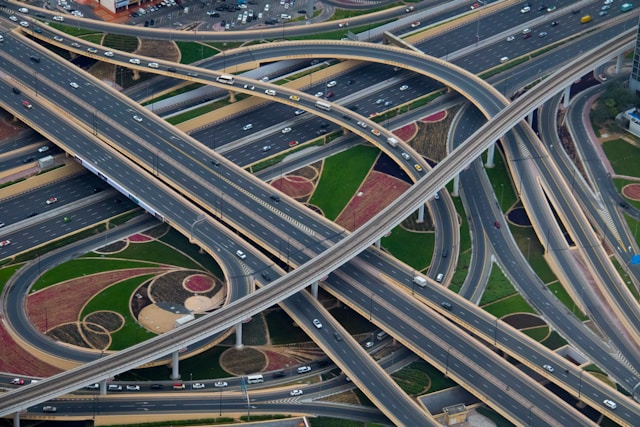Major highways in the UAE you should know about

One of the main draws of the UAE has always been its well-developed and contemporary infrastructure. Its highways and roads are constructed to meet the environmental requirements and connectivity requirements of the whole country. Together with improving inter-emirate connection and traffic efficiency, the UAE’s main motorways form the backbone of the nation’s infrastructure.
In the United Arab Emirates, there are six main roadways that one must be aware of when driving. Let’s examine the main roads and highways in the United Arab Emirates and their destinations.
Major Highways in Hhe UAE
The UAE’s most well-known motorways are listed below. Gaining a thorough awareness of these routes will help you to navigate the UAE with ease and efficiency.
E11
With the exception of Fujairah, all of the emirates have links via the E11 arterial route. With a total length of 558.4 km, it is the UAE’s longest road. The road extends all the way to Ras Al Khaimah, beginning at the Al Batha border crossing at the Saudi Arabia–UAE border in Al Silah, Abu Dhabi. The E11 passes through some of the most well-known areas of the city, including the Abu Dhabi International Airport, Bur Dubai in Dubai, and Al Majaz in Sharjah. In different emirates, the E11 is known to by different names.
- Sheikh Maktoum Bin Rashid Road, Abu Dhabi
- Sheikh Zayed Road in Dubai
- Sheikh Muhammad bin Salem Road, Ras Al Khaimah
Sheikh Zayed Road
Dubai’s busiest route, Sheikh Zayed route, is an important part of the E11. Upscale hotels and towering buildings with serviced hotel flats and homes can be found along the motorway. Major corporate hubs in Dubai have links to this busy thoroughfare.
E311: Sheikh Mohammed Bin Zayed Road
This toll-free road between Sharjah and Dubai is quite popular with Sharjah residents who work in the latter city. From Sharjah, the E311 travels to Ajman, then goes via Umm Al Quwain and ends at the E11 in Ras Al Khaimah.
E611: Emirates Road
E611, popularly known as the Emirates Road, is a 110-kilometer stretch that runs through Dubai. This highway in the United Arab Emirates runs parallel to the E311 and can be used to get from Abu Dhabi to the Northern Emirates without passing through Dubai. In conclusion, Emirates Road connects Abu Dhabi to Sharjah, Ajman, Ras Al Khaimah, and Umm Al Quwain while avoiding Dubai.
Speed Limits for UAE Highways
The UAE and Dubai motorways have speed restrictions that typically fall between 100 and 120 km/h. The speed limit on rural roads is often 100 km/h, whereas the speed restriction on urban dual-carriageways varies from 60 to 80 km/h.
All emirates permit a 20 km/h buffer on the speed limits, with the exception of Abu Dhabi. Therefore, unless you exceed 121 km/h, you won’t be subject to a speeding fine on a highway in the United Arab Emirates with a speed limit of 100 km/h. Remember that in Abu Dhabi, this rule is not applicable.



